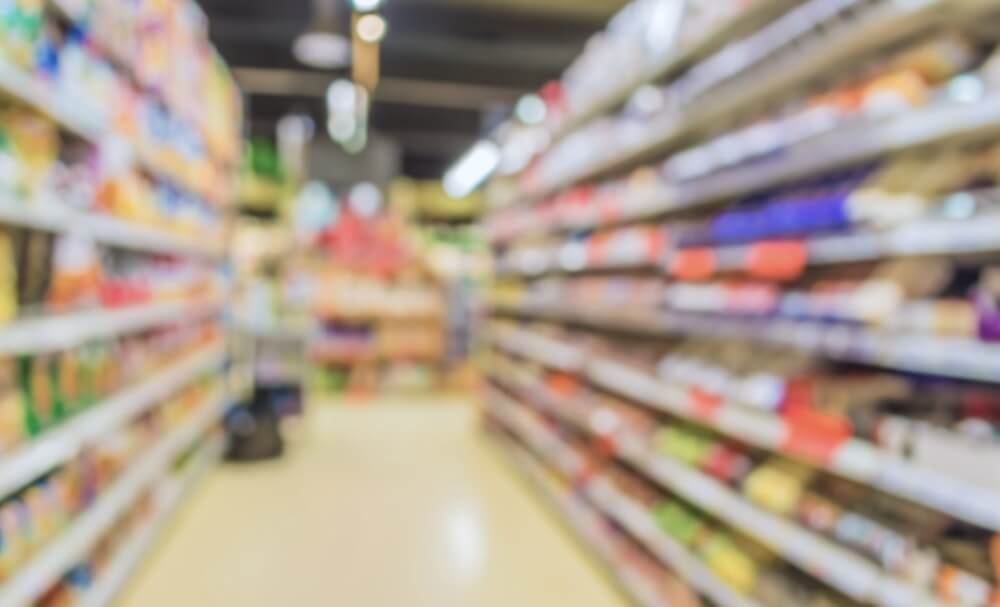How Mission Data engineers partnered with Kroger to create a global digital shelf solution boosting customer experience
For nearly a decade, Mission Data has been an ongoing research and development partner of the Kroger Company, the nation’s largest grocer with $108 billion in sales. The Cincinnati-based supermarket giant employs more than 431,000 associates who serve customers in 2,778 supermarkets and multi-department stores in 35 states.
As the chain faces competition online from Amazon.com Inc., Wal-Mart Stores Inc.’s Jet.com unit, and others, Kroger has invested heavily in digital solutions to improve the in-store customer experience for its now 8.5 million customers per day, while also creating operational efficiencies and frictionless workflows for more than 431,000 employees.
Out of our R&D work with Kroger, our engineers have developed several Internet of Things (IoT), mobile, and web-based products to fundamentally change the employee and customer experience. Data flows from devices using Zigbee wireless mesh networks to create an enterprise-wide platform that allows for temperature monitoring, analytics, and faster checkouts, among other operational improvements. These industry-leading technologies are now being deployed at thousands of stores across the country, and even overseas, with Kroger announcing that it plans to increase technology spending by 200% in 2018.
EDGE Shelves Bring Tech to the Center Aisles
At a typical grocery store, paper price tags line the shelves, and perhaps some coupons stick out. When prices need to be changed, associates must manually walk to each item with handheld scanners and pricing guns. At Kroger, where tens of thousands of individual items line the shelves, it normally takes more than two weeks to completely re-price a store by hand with new tags.
Now, with Enhanced Display for Grocery Environments (EDGE) shelving, Kroger has its shelves fitted with a 4-inch digital display that can present pricing, videos about the products, and other information such as indicating gluten-free products. The digital displays are designed with food safety in mind— plastic screens instead of glass to avoid breakage, no chemicals that can leak, and minimal heat. The fully-integrated IoT solution automates pricing data, saving significant labor costs while improving customer experience.
EDGE shelves can also be fitted with sensors that measure the weight of the items on top of them. The solution is integrated with handhelds used by the Associates, and can alert them with sales data to maintain production levels. Employees know instantly which SKUs need to be restocked and where they should be presented on the shelves. The solution is freeing up more time for Associates to spend helping customers.
On the customer side, EDGE interacts with shoppers who use Kroger’s mobile app, and can detect their location in the aisles, offer tailored promotions based on their purchasing habits, and even highlight items on their grocery lists as they pass by. This location-based interaction is also particularly useful for associates picking an order for a customer to pick up at the store or deliver to their home.
Mission Data has been involved with the development of the EDGE solution since its conception. Our team worked on multiple generations of the shelves with Kroger’s technology lead, hardware engineers, optics experts, and more to develop the software and assist with installation and upgrades.
EDGE Results: Maximized Profitability & Data Insights
Since fitting a test store in Cold Spring, KY, with 2,200 EDGE shelves (mainly in the center dry goods aisles), the solution was launched in more than 14 stores in 2017 and is being expanded in 2018. The shelves can also be seen in Japan where Kroger deployed them for another grocer.
Kroger executives say video and no-motion ads featured on the EDGE shelves have boosted sales. During testing in the diaper aisle, the store sold more wet wipes when the shelves flashed “don’t forget baby wipes” reminders.
In addition to lively interactions, the technology also provides a new way to collect data. Kroger already knows a lot about its customers through its loyalty programs, and smart shelves provide insights about how customers move through the aisles and which promotions are most effective.
Kroger says it continues to study customer response to the technology. While the company has tested audio with the shelves, some customers found it jarring to listen to a sales pitch from a store fixture.
Future applications could include providing on-demand nutritional information when shoppers touch the shelf below an item. Kroger executives also say they can easily see a day when the shelves will talk to shoppers’ smartphones.
“It’s truly a personalized interaction with the services that we offer, and I see that mobility has had a role in that. I think locationing has had a role in that, as well. All of that together creates some really compelling experiences.”
—Chris Hjelm, CIO, Kroger, as told to Forbes.




